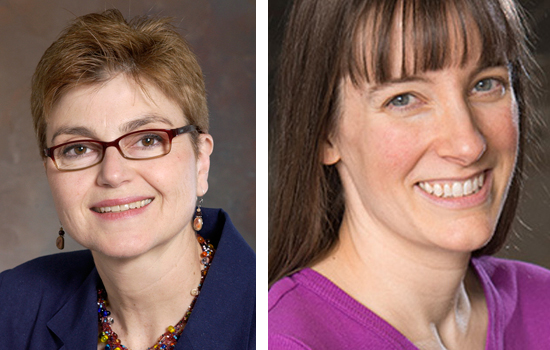RIT to offer Ph.D. in mathematical modeling
Emerging discipline connects STEM fields
Sophia Maggelakis and Elizabeth Cherry
Rochester Institute of Technology will offer a new Ph.D. in mathematical modeling, beginning in fall 2017.
This emerging discipline integrates applied mathematics with scientific computing to model real systems and to solve research problems across the science, technology, engineering and mathematics, or STEM, fields and complements finance, medicine and social science research. The program is RIT’s eighth doctoral degree and is housed in the College of Science.
Mathematical modeling combines mathematics, logic and scientific computing to simulate and predict future behaviors or measurable results of complex systems found in the real world. Research examples include modeling the heart’s functions, modeling contact lenses to improve the technology and tear-films to understand dry-eye disease, modeling the brain to study concussions and astrophysical systems like binary black holes to simulate gravitational waves. Other modeling applications focus on earth systems to study climate change and finance to predict the function of financial systems.
“This program is the first of its kind nationally,” said Sophia Maggelakis, RIT Dean of the College of Science. “It promises to serve as a model for a new kind of doctoral training in the mathematical sciences and to position RIT as a leader in that area. We are very excited and are looking forward to greeting the first Ph.D. students who will be accepted to this program and to congratulating the first graduates.”
Students will learn to analyze, solve and interpret equations that address problems in medical sciences, medical devices and drug delivery, computational neuroscience, computational physics and astrophysics, earth systems, defense and financial systems, for instance.
The U.S. Bureau of Labor Statistics predicts optimistic employment prospects for those with advanced training in mathematical modeling. Job opportunities for mathematicians are projected to grow 23 percent by 2022—surpassing the average for other occupations. Projections show the best job prospects favoring candidates with advanced mathematical techniques and modeling skills.
The National Research Council of the National Academies’ report, “The Mathematical Sciences in 2025,” provides strong support for the type of training offered by RIT’s mathematical modeling program and the workforce demand for graduates with advanced skills in this area.
RIT’s Ph.D. program in mathematical modeling will prepare graduates for competitive jobs in industry, government agencies, national research laboratories, business and corporate research, as well as for academic opportunities in applied fields. The curriculum will complement and synergize other RIT programs and support the university’s strategic plan. It will give graduates a solid foundation in the development and application of mathematical models of real-world problems, and train researchers to communicate with colleagues throughout the STEM disciplines.
“Modeling is a challenging area, because a modeler must have a solid foundation in mathematics as well as expertise in the application domain,” said Elizabeth Cherry, associate professor in RIT’s School of Mathematical Sciences and director of the mathematical modeling Ph.D. program. “Our goal is to help students develop the cross-disciplinary knowledge and skills that will enable them to gain new insights into real-world scenarios.”
Students will develop broad modeling, computational and problem-solving skills in a specific application area, such as biomedicine, earth systems modeling, finance, data analytics and simulation of complex systems, and network analysis. This will be paired with a deep expertise in a concentration area, such as applied inverse problems, biomedical mathematics, discrete mathematics, dynamical systems and fluid dynamics, and geometry, relativity and gravitation.
The program is designed for students with undergraduate majors in the STEM disciplines and mathematics and computer knowledge. In addition to 60 credits of graduate coursework, each student will be required to have an interdisciplinary internship in mathematical modeling outside RIT. The program will culminate with the student’s Ph.D. dissertation.
For more information about RIT’s Ph.D. in mathematical modeling, contact Elizabeth Cherry at excsma@rit.edu or go to https://www.rit.edu/programs/mathematical-modeling-phd.









